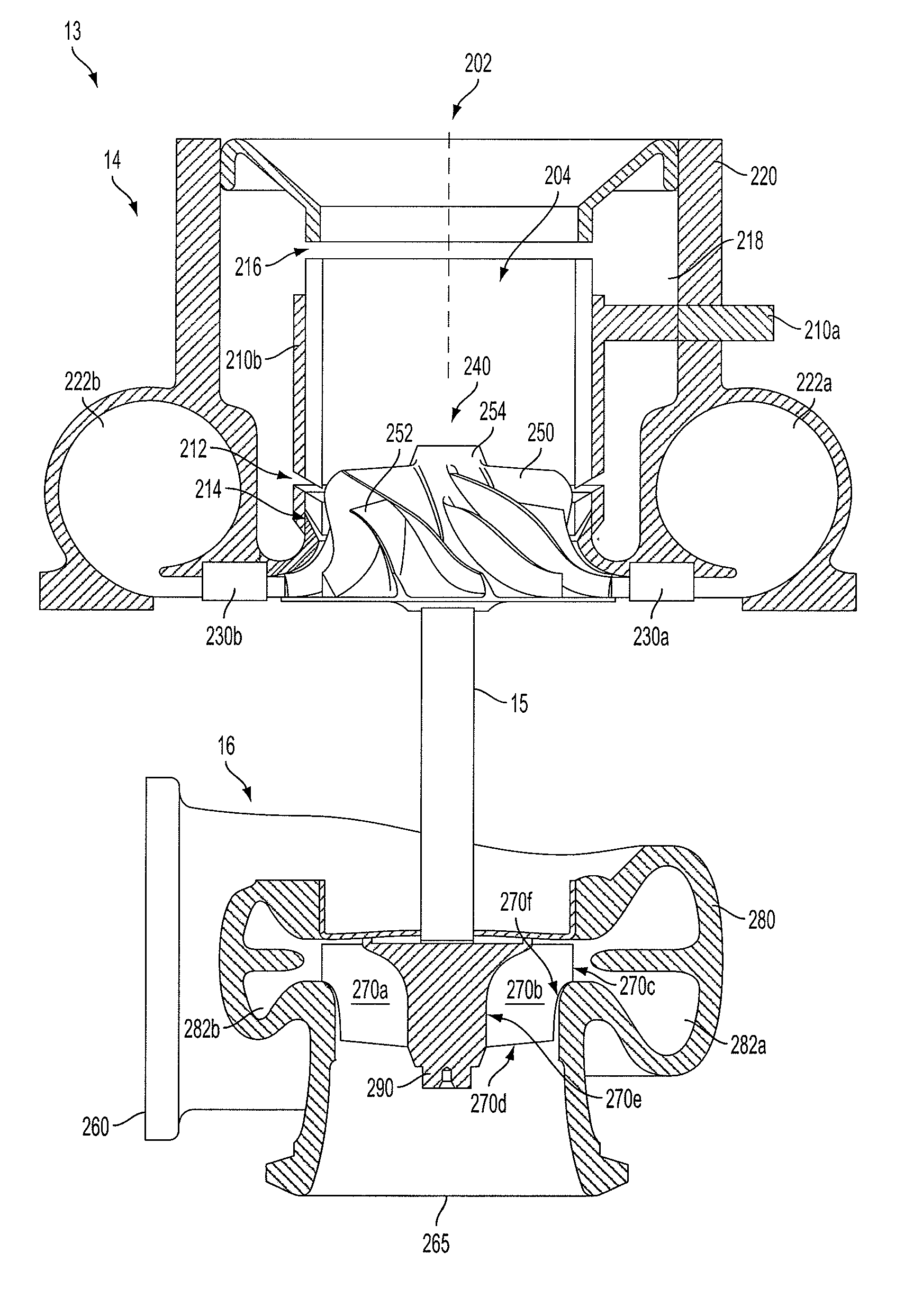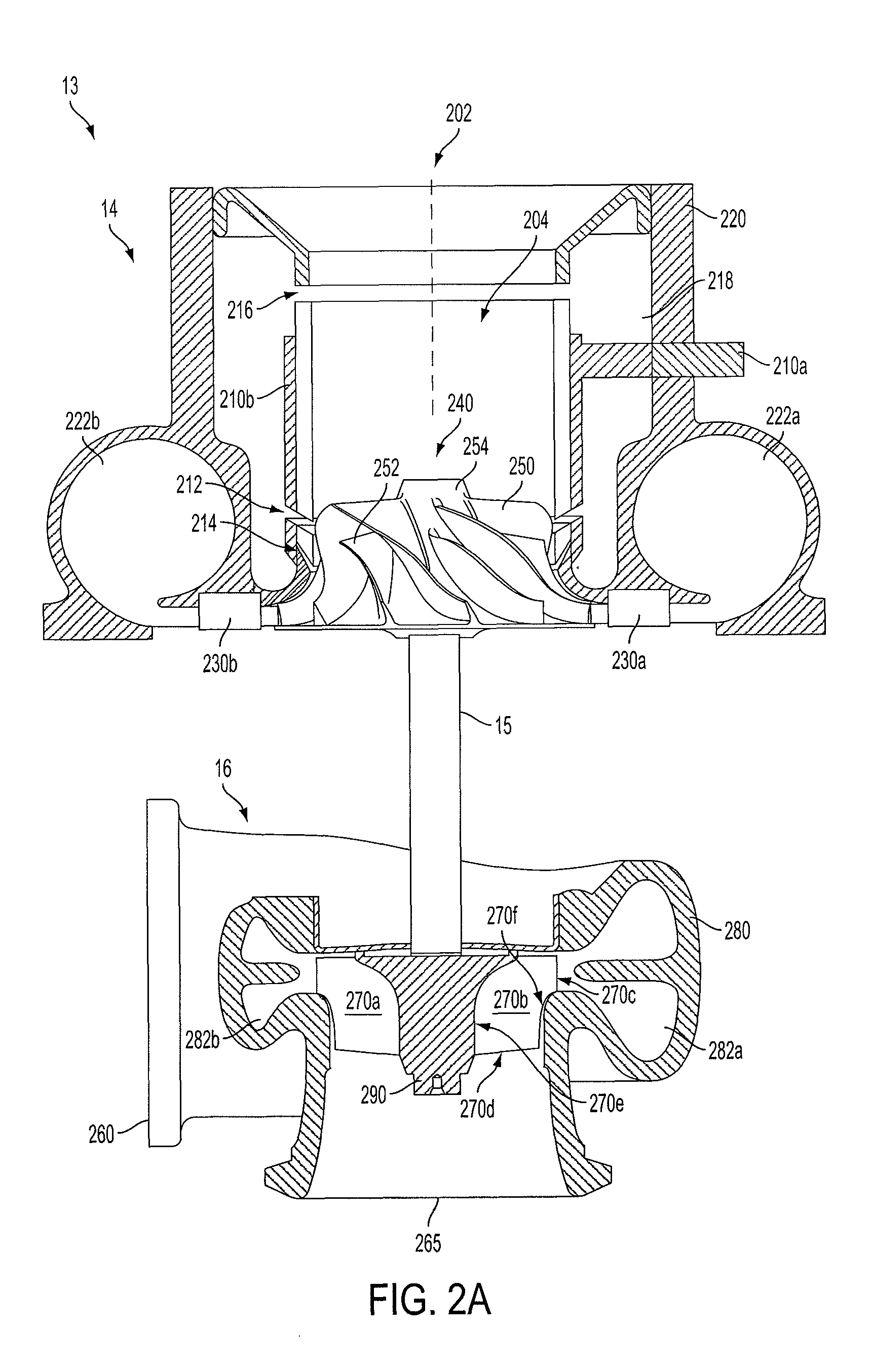Turbocharger
a turbocharger and turbocharger technology, applied in wind motors with perpendicular air flow, waterborne vessels, machines/engines, etc., can solve the problems of engine and air flow mass through the compressor slowing down, turbocharger continuing to spin, engine power loss, etc., to increase the flow of air into the engine, the effect of improving the torque/power output density of the engin
- Summary
- Abstract
- Description
- Claims
- Application Information
AI Technical Summary
Benefits of technology
Problems solved by technology
Method used
Image
Examples
Embodiment Construction
[0024]The following description relates to systems for turbochargers of internal combustion engines with exhaust gas recirculation (EGR). An example embodiment of an engine with a turbocharger and exhaust gas recirculation is illustrated in FIG. 1. The example turbocharger is shown in more detail in FIGS. 2A-2B, such that the components affecting aerodynamic flow through the turbocharger may be examined. In FIG. 2A, a compressor and a turbine in the turbocharger are illustrated. An example embodiment of an impeller blade of a compressor is shown in more detail in FIG. 2A. FIGS. 3A and 3B show a meridional projection of a blade and a cross-section of a blade, respectively, so that various blade characteristics may be defined. FIGS. 4A-4F are tables of prophetic data of impeller blade characteristics that may extend the operating range of the turbocharger. The data from FIGS. 4A-4F are graphed in FIGS. 5A-5B so that generalizations about the data may be observed. FIGS. 6A-6C are table...
PUM
 Login to View More
Login to View More Abstract
Description
Claims
Application Information
 Login to View More
Login to View More - R&D
- Intellectual Property
- Life Sciences
- Materials
- Tech Scout
- Unparalleled Data Quality
- Higher Quality Content
- 60% Fewer Hallucinations
Browse by: Latest US Patents, China's latest patents, Technical Efficacy Thesaurus, Application Domain, Technology Topic, Popular Technical Reports.
© 2025 PatSnap. All rights reserved.Legal|Privacy policy|Modern Slavery Act Transparency Statement|Sitemap|About US| Contact US: help@patsnap.com



